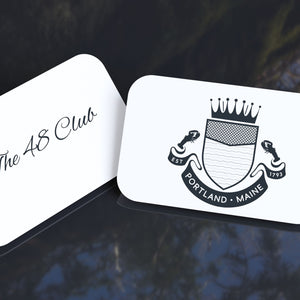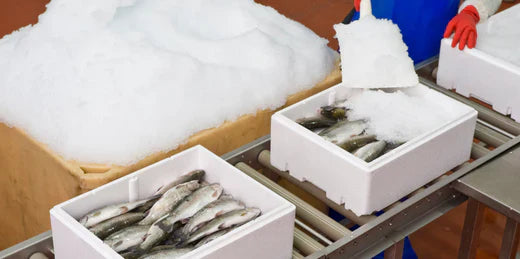Let’s talk about flash freezing because, spoiler alert, it’s not just something out of a sci-fi flick. This cool (pun intended) technique is all about locking in peak flavor and freshness at lightning speed. Think of it as nature’s pause button, preserving your food in its most delicious moment, no Instagram filter required.
From seafood that tastes like it took a quick dip in the ocean to berries bursting with juice, flash freezing keeps everything tasting just-right. So, let’s break the ice and dig into why this frosty method is such a game-changer for your plate!
What Is Flash Frozen?

When we say something is "flash frozen," it’s not about giving your food a quick photo op. It's a speedy freezing method that locks in freshness faster than you can say "frostbite." Flash freezing uses extremely low temperatures to quickly freeze food, and the result? Ice crystals so tiny they could be extras in "Honey, I Shrunk the Kids."
This quick-chill method helps maintain texture, flavor, and nutritional value, keeping your food in a suspended state of perfect freshness as if it’s just been harvested, caught, or cooked. So, next time you hear "flash frozen," think less superhero cape, more superhero cape for your plate!
How Does Flash Freezing Work?

Ever wonder how your favorite frozen treats keep their fabulously fresh taste? That’s the magic of flash freezing at work! This super cool technique is like a time capsule for flavor, texture, and nutrition, freezing food in the blink of an eye. Here’s the scoop on how this frosty feat is achieved:
Super Cool Science
Flash freezing involves super-low temperatures, way colder than your average freezer. Using substances like liquid nitrogen or carbon dioxide, foods are rapidly brought down to chilling lows, preventing large ice crystals from forming.
Ice Crystal Control
Why do ice crystals matter? Well, smaller crystals mean less damage to food’s cellular structure. This means when you thaw your frozen berries or veggies, they retain more of their original texture and don't turn into a mushy mess.
Speed is Key
The faster food freezes, the better the quality. Flash freezing speeds through the critical temperature range (31°F to 25°F) where large, destructive ice crystals like to grow. It’s like fast-forwarding through the bad parts of a movie to get to the good stuff quicker!
Sealed In Goodness
Not only does flash freezing lock in your food’s appeal, but it also seals out nasty bacteria and prevents spoilage. It’s like giving your strawberries a suit of armor against the microbial hordes.
Ready for the Long Haul
Foods that are flash frozen can be stored longer without losing their quality. This means you can enjoy summer fruits in the dead of winter as if they were just plucked from the vine.
How Does a Flash Freezer Work?

Think of a flash freezer as the Usain Bolt of the freezing world, fast and efficient. This nifty device uses super-low temperatures and rapid cooling to turn your fresh eats into frozen treats in a blink.
By blasting food with icy cold air or dipping it in liquid nitrogen, it freezes everything so quickly that the ice crystals barely have time to form, preserving the texture and taste like magic. It’s not just freezing; it’s an arctic makeover that locks in freshness faster than you can say "frozen!"
How to Flash Freeze at Home

Flash freezing at home might not involve a fancy liquid nitrogen setup, but with a few tricks up your sleeve, you can still pull off some chillingly effective preservation magic. Whether you’re saving summer berries or making sure your catch of the day stays just-caught fresh, here’s how to flash freeze like a pro:
Prep and Parcel
Start by prepping your food. Slice it, dice it, or leave it whole, just make sure it’s clean and dry. Spread your food out on a baking sheet, ensuring pieces aren’t touching (to prevent a frozen mass disaster!).
Chill Out
Slide the tray into your freezer. Now, crank up the cold! The faster your food freezes, the smaller the ice crystals, keeping those cellular walls intact and the texture top-notch.
Bag It Up
Once solidly frozen, transfer your items into freezer bags. Squeeze out as much air as possible (think of it as giving your food a cozy little vacuum-sealed hug) to ward off freezer burn.
Label and Store
Don’t let your frosty efforts go unidentified. Label each bag with the date and contents. Future You will appreciate the heads-up when it’s time to conjure up a meal.
Enjoy When Ready
When it’s time to defrost, your food will be as fresh as its freeze day, ready to dazzle in your next culinary concoction. It’s like sending your taste buds back in time!
Does Freezing Fish Kill Bacteria?

Freezing fish might seem like it could stop bacteria in their tracks, but does it really send those pesky germs packing, or is it just putting them on ice? The truth is, freezing isn’t a fishy superhero cape against all bacteria. While it won’t kill them, it puts them into a chilly coma, pausing their activity until the thaw comes.
So, when you defrost that salmon filet, it's like waking up those bacteria from a frosty nap. To ensure your fish is safe to eat, you’ll want to cook it to the proper temperature afterward, which really turns up the heat on any bacterial holdouts.
Remember, freezing is more about pressing pause than the stop button on bacteria. So, while it’s a cool trick, it’s not a cure-all, but paired with proper cooking, it's a dynamic duo of food safety!
Nitrogen Freezing: The Best Method to Preserve Freshness

When you opt for seafood preserved with nitrogen freezing, you’re not just making a meal; you’re making a statement. You're saying yes to premium taste, yes to sustainability, and no to mediocrity. Why does nitrogen get the gold medal in the freezing Olympics? Let’s break it down:
Super-Speedy Freezing
Nitrogen freezes seafood at breakneck speeds, reducing ice crystals and preserving cell structure. This ensures that when thawed, your seafood is as fresh as if it had just been caught.
Flavor and Nutrient Preservation
Nitrogen freezing locks in flavor and nutrients, preventing the seafood from drying out or losing taste, effectively pausing its freshness until you're ready to enjoy it.
Fights Off Freezer Foes
This method protects against freezer burn by forming a protective barrier around the seafood, maintaining its color and taste without any undesirable changes.
Longer Shelf Life, Higher Quality
Nitrogen preserves seafood at its peak quality, extending shelf life without sacrificing flavor, so your seafood remains top-notch for those special occasions.
Green and Clean
Environmentally friendly, nitrogen freezing uses natural nitrogen without harsh chemicals or heavy energy consumption, aligning with eco-conscious practices.
The Maine Lobster Advantage

When it comes to Maine lobster, you’re not just getting any ordinary catch, it’s like the VIP of lobsters! What sets it apart? Well, Maine’s lobster processors use some seriously cool (literally) nitrogen freezing tech to lock in the freshness, so your lobster tastes like it’s fresh off the boat, even if it's been chilling in your freezer.
And let’s not forget, Maine’s lobster industry is all about sustainability. These folks care about keeping things ethical and environmentally friendly, making sure there’s plenty of lobster for future generations to enjoy. So you can dig in, guilt-free because this lobster's not just tasty, it's doing good for the planet, too!
Wrapping Up
Flash freezing really does work wonders when it comes to keeping your seafood in top-notch condition. It’s like stopping time so your catch can remain at its best and freshest state. Why not give it a try? Whether you’re looking for flash-frozen favorites, checking out our BOGO DEALS, or even eyeing up a Live Maine Lobster, we’ve got something that’s sure to satisfy.
Fresh, fun, and waiting for you to dig in!










